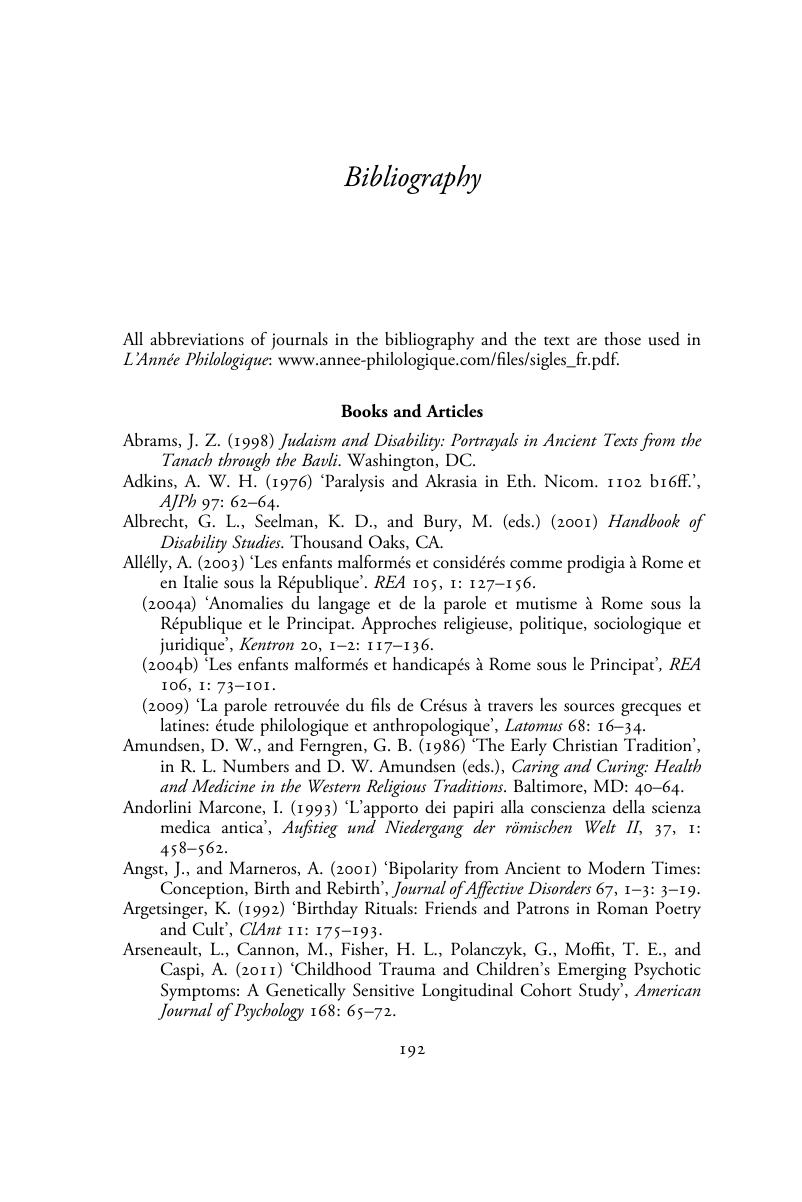Book contents
- Disabilities and the Disabled in the Roman World
- Disabilities and the Disabled in the Roman World
- Copyright page
- Contents
- Preface
- Abbreviations
- Introduction
- Chapter 1 Conception, Birth and the ‘Crucial’ First Days
- Chapter 2 Mental and Intellectual Disabilities
- Chapter 3 Blindness, a ‘Fate Worse Than Death’?
- Chapter 4 Deaf, Mute and Deaf-Mute
- Chapter 5 Speech Defects
- Chapter 6 Mobility Impairments
- Conclusions
- Bibliography
- General Index
- Index of Impaired Persons
- Index Locorum
- References
Bibliography
Published online by Cambridge University Press: 23 March 2018
- Disabilities and the Disabled in the Roman World
- Disabilities and the Disabled in the Roman World
- Copyright page
- Contents
- Preface
- Abbreviations
- Introduction
- Chapter 1 Conception, Birth and the ‘Crucial’ First Days
- Chapter 2 Mental and Intellectual Disabilities
- Chapter 3 Blindness, a ‘Fate Worse Than Death’?
- Chapter 4 Deaf, Mute and Deaf-Mute
- Chapter 5 Speech Defects
- Chapter 6 Mobility Impairments
- Conclusions
- Bibliography
- General Index
- Index of Impaired Persons
- Index Locorum
- References
Summary

- Type
- Chapter
- Information
- Disabilities and the Disabled in the Roman WorldA Social and Cultural History, pp. 192 - 214Publisher: Cambridge University PressPrint publication year: 2018



